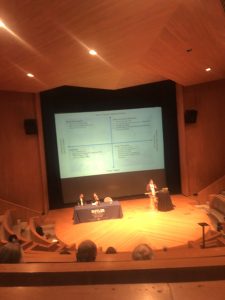It was very interesting to read a religious text other than the Bible. I was surprised at how many similarities there were between the two texts. There were honestly times where I could not differentiate whether I was reading the Bible or the Qur’an. There was also a lot of similarities in what God/ Allah is asking of his people in how they lead their lives. One example of this is how both the Qur’an and the Bible teach on how to treat the poor.
In the Bible, Luke 3:10-11 says, “And the crowds asked him, “What then shall we do?”And he answered them, “Whoever has two tunics[a] is to share with him who has none, and whoever has food is to do likewise.” Growing up in a Catholic family, I was always taught to put others before myself and to always serve the poor in whatever way possible. I think Luke 3:10-11 is a good example of what Christians are called to do in terms of helping those in need. Surah 57, verse 18 similarly quotes, “the men and women who spend in charity and give godly loan to god, will have it doubled for them and will receive and generous reward.” I think in this case Islam and Christianity is crossing over tremendously. If I was to hear the previous verse read in Mass I would not think twice if it was in the Bible or not because it is so in line with our values and beliefs as well. This is not the only example of a similarity between the two faiths, there was many more as well.
One difference, however, is that it came up multiple times while reading the Qur’an is that it is a texted that is meant to be recited. In both Surah 75 verse 18 and Surah 87 verse 6, the Qur’an talks about how it is meant to be recited. I find this interesting because there is controversy among Christians on wether or not the Bible is meant to be recited or not. Personally, I think there is nothing wrong with it and it is almost a sign of the utmost respect for God, although of course others have their reasons.
Despite all the similarities and differences, I think it is important to note that both Muslims and Christians worship one God who is all loving and all good according to both of our holy texts, and that we have more in common than we think if we just take the time to learn.
